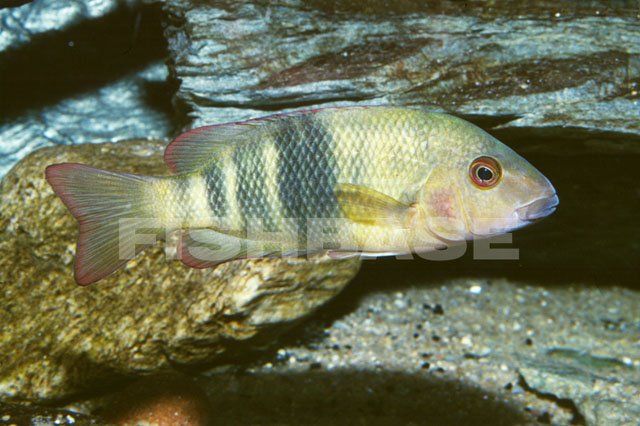|
Dorsal spines (total): 14-16; Dorsal soft rays (total): 12-15; Anal spines: 7-8; Anal soft rays: 10-13. Diagnosis: A shallow-bodied, elongate Paretroplus diagnosed from all congeners except P. lamenabe and P. tsimoly by the presence of two wide and convergent, below the lateral midline, dark brown to black midlateral bands, representing the second and third or third and four bars in series; Paretroplus nourissati is diagnosed in life by a pigmentation pattern of broad vertical black bars on the flanks over bright orange to reddish-orange ground colouration (Ref. 78623). It is further distinguished from both P. lamenabe and P. tsimoly, in life and preservative, by the absence of bluish-gray to bluish-black lips, lower jaw, lower cheek, gular region, and belly; Paretroplus nourissati is further distinguished from P. lamenabe by a shallower body, 38.1-43.5% of standard length vs. 47.0-54.3%; pelvic fins that do not extend to origin of the anal fin when adducted, and by a smaller adult size, up to 160 mm standard length vs. regularly exceeding 180 mm standard length in P. lamenabe; it is further distinguished from P. tsimoly by the absence of enlarged, lobed lips; only P. lamenabe and P. nourissati exhibit a lateral pigmentation pattern in which the central two bars, which converge below the lateral midline, are by far the most prominent; by contrast, in life and preservation, P. tsimoly exhibits a pigmentation pattern in which the posteriormost five or four, as the bar on the caudal peduncle is sometimes pale, bars on the flanks are about equally prominent (Ref. 78623). |
